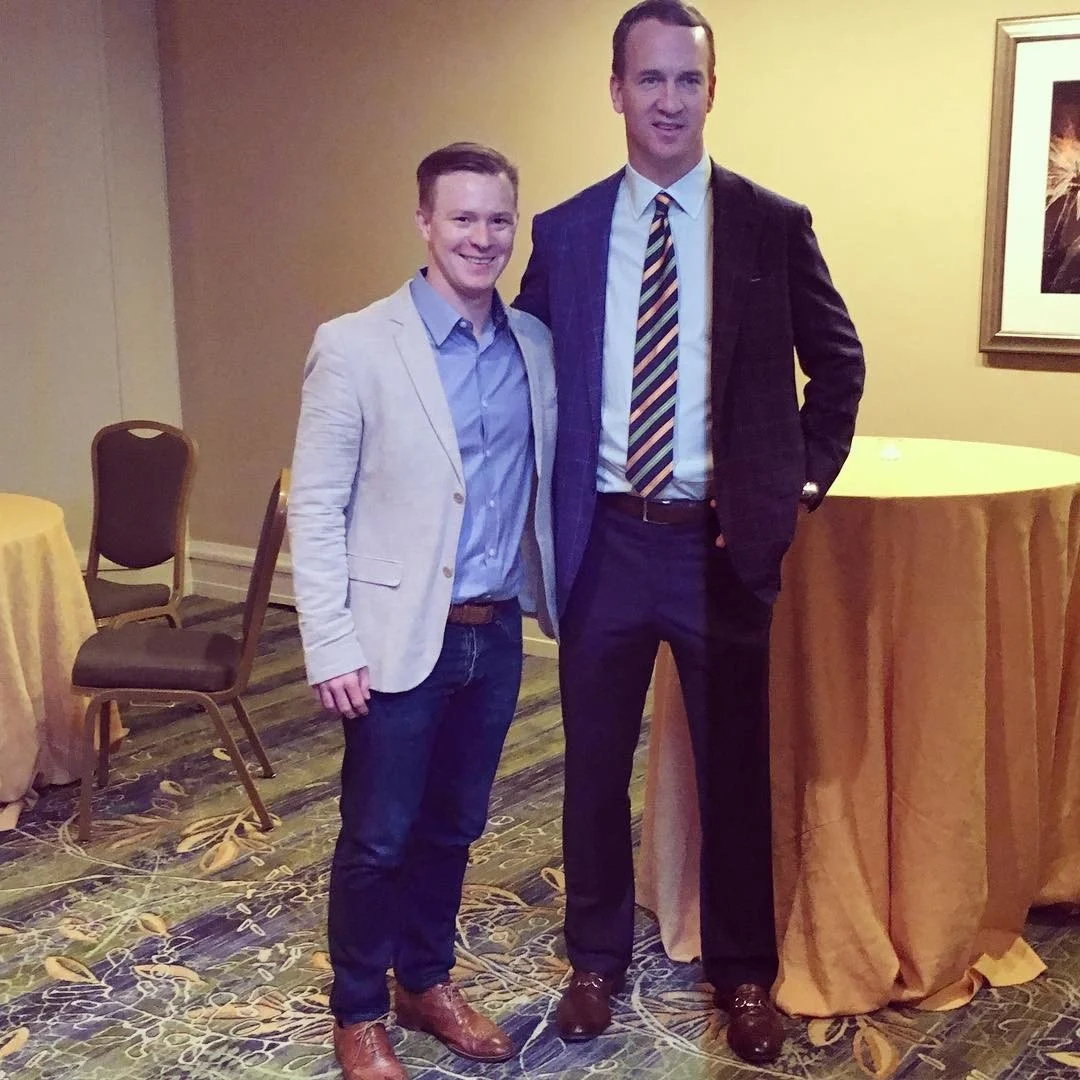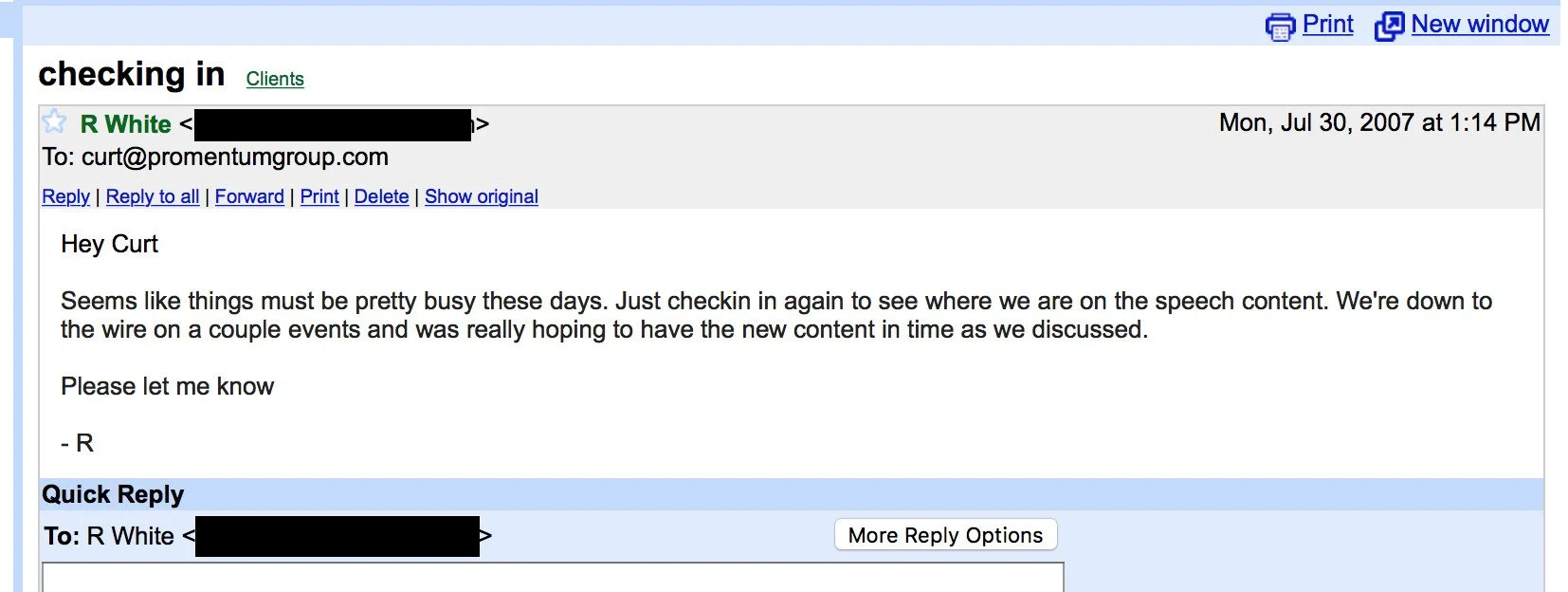How Distraction Almost Killed My Career
Why can’t I focus? Why am I so easily distracted?
Most of us are drowning in meetings, zoom calls, emails, pings, and texts. With interruption lurking around every corner, it’s easy to wonder, “Do I have ADHD or am I just distracted?” For me, the answer is both. Not only do I live and work in today’s frenzied, overworked, constantly connected society, I also have an ADHD diagnosis.
Me with Peyton Manning — yes, that’s actually him and no, I’m not really that short.
As a child with ADHD I got good grades, had good behavior, and my teachers liked me. My parents chose to not medicate me, and for the most part, I flew under the radar.
For most of my early years, I compensated by being outgoing and social. But, ADHD was still there — I tapped constantly and I talked all the time. I was also tired, a lot. And, I could not make myself focus on tasks I wasn’t interested in (like piano practice — sorry, Mom).
It wasn’t until I had graduated college and started my own business that I came face to face with my diagnosis. As a young entrepreneur, I was doing what I loved most in the world: helping people discover, craft, and share their message with the world. Every day, I worked with NFL players, TV personalities, and Olympians to help them communicate better to their audiences. It was my dream job. It should have been the best time of my life. Instead, I was miserable.
There were so many tasks that daunted me. And when you’re a business owner, not being productive costs you. I felt it. When you're on your own, there's no hiding what the bottom line says.
The work itself wasn’t the challenge. In fact, I loved it. The problem was that I'd look up and see 43 different emails that I had started, two text threads going, four G Chat conversations (this was 2007 after-all), and meanwhile, I didn’t have a clue whether my checkbook was even balanced. I could not focus on the things that were critical to actually creating and managing a successful business.
The third “just checking in” email sent from NFL hall-of-fame client (I completely ignored the first two).
Communication was my passion, my entire life’s work. And now it was also destroying my business.
Eventually, I hit a breaking point. I was two weeks late on a major deliverable that I had promised a client — an NFL hall-of-famer, no less. What’s worse, the hall-of-famer was my grandfather’s favorite football player of all time. What’s even worse, is that same hall-of-famer had, at my request, just recorded a personal video for my grandmother on her 90th birthday. And here I was ghosting him. This is the third “just checking in” email he sent me — the previous two I completely ignored. He used a friendly tone — but it was a clear indictment.
What was wrong with me? Why couldn’t I get the work done? I knew I needed to either get a grip on things, or move back home with my parents. Something had to change.
ADHD comes with some advantages, like the ability to hyper-focus. After this breaking point, I hyper-focused on figuring out what was going on with me, and what I could do to remedy it. Most recommendations that I found for self management did not work for me though. They actually made me feel further from where I knew I should be. After really diving into neuroscience and the ADHD brain, I learned some things about myself:
I’m affected by my environment — I do well associating specific tasks to specific places. A clean desk and office make me feel more organized. I like background noise.
Motion is a great way for me to focus — yes, I’ve even made a few work calls while I’m out running.
I’m good at focusing on what I like — such as complex problems and strategic ideas.
I have a low threshold for what I find uninteresting — sitting through boring meetings or trainings is excruciating.
I need sleep — when I’m tired, my brain jumps around a lot more.
Our Entire Workforce Has ADD
It turns out, I’m not the only one struggling. We all have a difficult time focusing on certain tasks. And, we all hate boring meetings. While not everyone has a diagnosis, some experts believe that our constantly-distracted, stressed-out, consumer-driven lives can trigger ADHD. Here are few stats that reveal just how pervasive and costly distraction is:
Workplace distractions cost cost $600B per year
31 hours per office, per month, are spent in unproductive meetings
The average person checks their phone 150 times per day (that’s about once every six waking minutes)
20% of workers spend over an hour per day on social media while at work
The effects reach into our personal lives too. We spend 60% more time connected to digital media than we do in conversation with our significant other. A study on workplace stress found that the more pressure we feel to be available, the more likely we are to take sick days.
The Way Out
Since those early days of my career, I’ve been on a journey to answer the question: what does it look like to thrive in an age of constant distraction?
Using myself as the lab rat, I have experimented constantly with new approaches to manage and focus my own attention. I have spent thousands of hours researching and interviewing CEOs, managers, and employees. I have partnered with experts way smarter than me. I wrote a book. I travel throughout the US and Canada speaking to organizations about how they can improve their companies by creating habits and environments that protect focus. And in my role of Head of People and Culture at Venus Aerospace, I get to implement what I’ve learned to help create a culture that prioritizes undistracted work.
There is no easy answer to overcoming distraction. But realizing that we’ve lost the ability to control where we put our attention is a start. Here are a few of my favorite resources to help individuals and organizations get started on the path to regaining that control and harnessing the power of human attention:
Drowning in Meetings and Messages — Forbes article
7 Tips for More Effective Meetings — Infographic
FocusFit Challenge — Our signature professional development program teaches the focus skills necessary for more engagement, productivity, and satisfaction at work
How to Enjoy Work Again (No, Seriously) — My debut TEDxTalk




